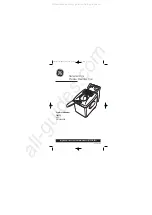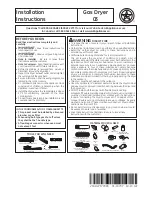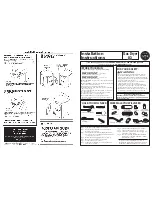
Copyright Tes Drying Systems, 2014
51
6.
Insert a centrifugal air mover into the E-TES SD box. Plug the air mover cord into the wall outlet.
Connect the two GFCI power cords to the E-TES SD 120 Volt unit and plug the cords into two different
120v circuit outlets.
7.
Place remote sensors for air temperature, surface temperature and moisture level as needed in desired
locations. Connect the sensors to the E-TES SD 120 Volt unit.
8.
Turn on the E-TES SD unit and adjust the set points for each of the remote sensors as required for your
application.
9.
Turn on the air mover.
10.
Adjust the speed of the air mover, use additional sand bags to hold the carpet down in some spots and
pad pins to lift the carpet in some areas as needed to get the carpet floating and prevent flapping.
Step #3 - Airflow applied directly to the water
(Evaporation)
1.
We are getting air movement with the air mover and the E-
TES SD box is providing the heat. We are heating the water to
cause the evaporation, and removing the vapor from the floor
by providing airflow under and through the carpet. This heated
air heats the carpet, walls, baseboards, sill plates and walls up to
12”, that may also be wet, creating water vapor. As the air
escapes through the carpet and along the walls opposite the E-
TES SD unit, it carries the water vapor away from the wet
surfaces.
Step #4 - Reduction of vapor saturation levels (
humidity
) by dehumidification or
evacuation
(Dehumidification)
1.
As we have evaporated the moisture into the air, we need to remove
it from the structure along with the excess heat. This is
accomplished with the exhaust controller, an air mover, 14” lay flat
duct and a duct ring. Set up the exhaust system to evacuate to the
outside of the structure.
2.
Set the Remote Activation temperature to turn on the exhaust fan
using the Smart E-TES Remote Exhaust Fan Control or use a
separate exhaust control unit set to keep the ambient room
temperature below 105ºF. (See Page 16 of this manual or the
instructions included with separate exhaust controller unit).
Overheating the structure may cause damage to
structure or contents. Controlling the temperature is important to
prevent damage.
Monitor your progress at least daily – more often if practical. Carpets,
floors and walls will dry quickly!
Air mover with ducting
connected to Exhaust
Controller
PAD PIN
Exhaust Controller MB230
Remote Exhaust Fan
Control AT206





































